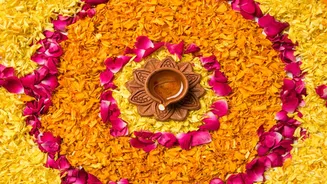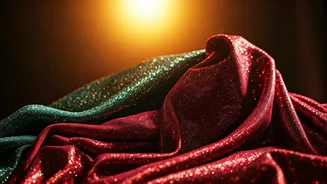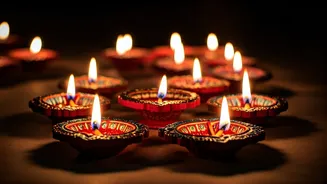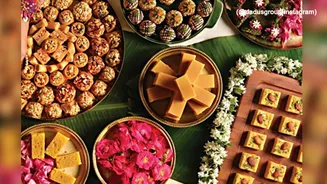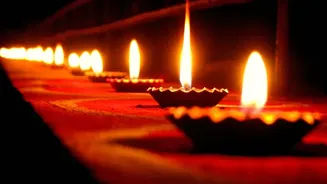This Diwali, India’s design aesthetic is embracing a quieter, more intentional kind of luxury, one where tradition doesn’t shout, it whispers. Gone are the days when festive décor meant a riot of color,
ornate embellishments, and overflowing corners. The new Diwali home is calmer, curated, and conscious, a space where serenity meets celebration and every detail has meaning.
At the heart of this transformation are architects Ekta Agarwal, Chief Architect, FOAID Designs, and Sumit Dhawan, Cityspace’82 Architects, both of whom are redefining what festive elegance looks like in modern India. Their approach blends minimalism with the warmth of cultural symbolism, resulting in homes that feel grounded, radiant, and timeless.
Ekta Agarwal: Subtle Luxury with a Soulful Indian Heart
For Ekta Agarwal, Diwali décor in 2025 is all about balance, the calm of minimalism and the richness of heritage. “The idea is to let every piece breathe,” she explains. “Instead of filling a room, I focus on creating moments that evoke emotion.”
Agarwal’s festive palette this year turns toward cool neutrals warmed with glints of brass and gold, evoking quiet sophistication. Her signature style pairs detailed jaali screens with minimalist walls, a dialogue between old and new. Expect hand-thrown pottery, intricate block prints, and handcrafted lighting not chosen for grandeur, but for the stories they tell.
“In Indian homes, every artefact carries a memory,” she says. “My role as a designer is to give those memories a modern stage, one that feels serene but still connected to our roots.” Her spaces feel like meditations, festive yet peaceful, ornamental yet uncluttered, encouraging both celebration and reflection.
Sumit Dhawan: Geometry, Culture, and Warm Minimalism
Meanwhile, Ar. Sumit Dhawan, founder of Cityspace’82 Architects, sees festive design as a form of storytelling, an intersection of structure and soul. “Homes should reflect their inhabitants,” he explains. “Diwali décor shouldn’t be about adding more; it should be about expressing better.”
Dhawan’s architectural vocabulary is bold yet composed. He juxtaposes clean-cut geometry with rhythmic Indian motifs, bringing together structure and sentiment. Think marble pooja corners softly lit by diya-inspired fixtures, or facades etched with symmetrical patterns reinterpreted in modern materials.
“The warmth doesn’t come from color alone,” he notes. “It’s in proportion, balance, and locally crafted details that echo temple architecture without overwhelming a modern space.” For him, the true luxury lies in restraint using cultural cues subtly so that even a minimal home can carry the soul of Indian festivity.
Designing with Intention, Not Excess
What sets Agarwal and Dhawan apart is their shared commitment to authentic fusion, not token gestures. They don’t place a paisley cushion on a modern chair and call it “tradition meets trend.” Instead, they build an entire narrative, where every brass accent, textile, and silhouette earns its place.
“Good design,” Agarwal says, “doesn’t demand attention; it holds it.” Dhawan echoes this, adding, “A modern festive home should flow, minimal in form, maximal in feeling.”
Together, they represent a shift in India’s design consciousness, one that values craft over clutter, purpose over plenty, and harmony over extravagance.
A New Language of Festive Design
In 2025, Diwali décor is about more than visual appeal, it’s about emotion, memory, and mindfulness. Spaces are rooted yet fluid, opulent yet calm, and above all, personal. Brass accents, handcrafted textiles, and natural light are used thoughtfully, creating rooms that glow with character rather than excess.
For homeowners, the message is clear: embrace restraint, celebrate your heritage, and let your home tell your story, simply, beautifully, and meaningfully.
As Agarwal and Dhawan’s work shows, the most elegant spaces don’t scream festivity, they radiate it quietly, like the warm flicker of a diya in a still room.
